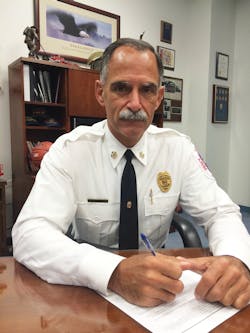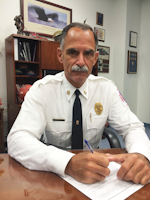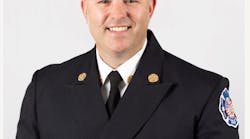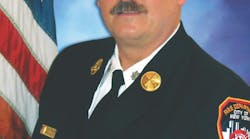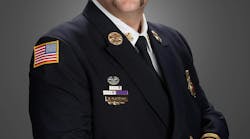This article is NOT what some would call another “Safety Nazi” attempt to get you to remove yourself from all danger or just let everything burn. This is a reality check for when everyone does NOT go home.
Everyone Goes Home—which we likely all know as the name of a National Fallen Firefighters Foundation (NFFF) program that champions the 16 Firefighter Life Safety Initiatives—should be the ideal we ALL strive to achieve. Nobody I know WANTS to attend funerals, especially for line-of-duty deaths (LODDs). Unfortunately, we face a reality where at least one firefighter/paramedic/EMT dies in the line of duty every four or five days in the United States.
Our unique risks
With respect to structural firefighting, I’ve said before—and I continue to strongly believe—there has to be a calculated balance between safety and ensuring that there’s an aggressive search, rescue and extinguishment effort underway. An aggressive posture (when warranted) will in many ways improve the safety of everyone involved by minimizing the overall risk sooner, including the impact that fire has on structural skeletons, building components and occupants.
Regardless of that aggressive firefight stance, the reality is that the majority of our LODDs have very little to do with structural firefighting issues. According to the NFFF, in 2014 and 2015, cardiovascular issues accounted for nearly 70 percent of our fire service LODDs, while trauma was the next largest group at 20 percent. About 10 percent of LODDs were attributed to burns, smoke inhalation or asphyxiation. In 2015, there was one LODD related to drowning.
Prince George’s County, MD, Fire/EMS Department’s (PGFD) own recent experiences include James “Doc” Brooks’ cardiovascular LODD during storm preparations in 2014 as well as the violent shooting death of Lt. John “Skillet” Ulmschneider at a welfare check incident on April 15, 2016.
The fire service tends to focus a lot of talk/action on the smoke/fire/vehicle accident LODDs, none of which would have impacted PGFD’s last two LODDs—or even the majority of the nation’s LODDs. Only recently has the fire service begun to focus on true healthy life choices and first responder mental health. Shootings involving EMS personnel are still relatively rare, so that is also something to which not much attention is currently paid.
Regardless of HOW the LODDs occur, once they do occur, what’s next? Does your department have an LODD (or significant injury/event) protocol? Has anyone on your command staff been intimately involved in the planning or execution of a full LODD funeral? Both fortunately and unfortunately, for many of us, the answer to these questions is “no.” And I only say “unfortunately” because the institutional knowledge and expertise of running LODD funerals and dealing with departments and families is not a “core” responsibility that many departments can afford (or want) to assign to personnel full time. Having an organizational protocol may seem morbid or even stupid to some; however, I assure you when IT happens, you’ll wish you had something more than a clue.
With this in mind, there are a few key points to understand related to coping with an LODD event at your department.
It’s OK to cry
Let’s get this part out of the way—it’s OK to cry! It is also important for the organization to have a leader who holds it together. The words that leader uses and the poise, or lack thereof, that the leader has during those moments of peril will forever live with many people and will set the tone for success or mediocrity. There’s no failure here. I’ve yet to see a fire department fold up and fade away over a fatality.
Our families
Ensuring that your department and families are taken care of becomes a dual #1 responsibility. After all, you must continue to provide service to your communities while also caring for those affected by the LODD, which is no small juggling act. There are many resources available to any fire service agency; all you have to do is ask for and accept the help—actions many chiefs have struggled with. Whether it is an NFFF Local Assistance State Team (LAST), the International Association of Fire Fighters (IAFF), the National Volunteer Fire Council (NVFC), local or state firefighters associations, local or state governments, or any host of support organizations available, there is a great deal of help available to you.
Social media—Typically the chief, chaplain or another high-ranking public official bears the responsibility of contacting next of kin and ensuring that appropriate notification is made, normally face to face. As you can imagine, social media plays a much larger role in “unofficial” notifications than could have ever been fathomed. It is a struggle, and it is necessary to get ahead of that social media wave. The last thing we want is for a loved one to find out about their family member’s death on social media. Aside from the family notification issues, unofficial social media posts can play a significant role in spreading inaccurate, many times even vitriol, information about significant incidents.
Liaisons—A fire department representative should immediately be set up as a “family liaison” (FL). The FL will be responsible for taking care of the family’s needs throughout the event. This could include arranging for food, travel, transportation, housing, stress care, grief counseling, or even just leaving the family alone (if that’s their request). Most families know what they got themselves into with the fire service; however, the FL needs to monitor activity to make sure that the family members are not overloaded or inadvertently excluded.
Your department also needs a liaison. The Department Liaison (DL) is the point of contact for all things related to the department’s response and/or activities related to the LODD planning. The FL and DL must work together to ensure that the family’s wishes are carried out, while also managing internal and external expectations for others grieving. I cannot emphasize enough how important it is for people to remember that this is about the victims and their families. People cannot take denials or other seemingly unexplained reactions or behaviors as anything personal. It’s not about them!
Stress—Critical incident stress management (CISM) is important. We’re not talking about the “old” debriefings where people were forced into group sessions that frequently turned into cricket chirping sessions or opportunities for people to take pot-shots. CISM teams play a crucial role in monitoring the health and welfare, and ensuring that folks have the opportunity to talk if they want to. These services should be available across the breadth of our families—department personnel and their loved ones, victims and families, the community. I strongly suggest bringing in outside folks to help when there’s a violent LODD, as even your internal CISM team might need help dealing with the situation when it’s one of their own.
Planning for services
Few services rival the pomp and circumstance of a fire or police department funeral. It takes a lot of solid planning and work to put this together. Don’t underestimate the work necessary and the strain this will place on your members. And no matter what, the depth of detail for these services must be rooted in the family’s wishes.
No family, no chief, no department should have to go through LODDs, but we do. I highly recommend asking for outside help to deal with the overwhelming details that will come up. In PGFD’s recent LODD, the National Capital Region Incident Management Team (IMT) was brought in to help manage the overhead structure. The IMT brought people and physical resources into the county to help our people manage the events. The IMT identified fire and EMS resources from 16 jurisdictions from Maryland, Virginia and the District of Columbia to fill in fire stations, so all on-duty personnel could attend the funeral services. This was critical to the department’s ability to cope with this horror.
In closing
There is so much more to navigating an LODD. Prepare yourself now. I’ll sum this up as succinctly as I can: 1) Have a plan that includes asking for help; 2) it’s OK to cry, but you need to hold it together; 3) it’s about the victim and their family—not about you. Stay smart and stay safe.
